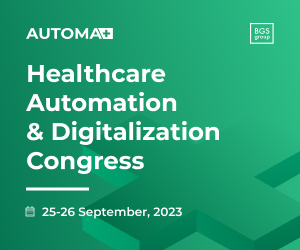The use of automation in pharmacy practice seems unavoidable and the use of this technology brings its own additional responsibilities if the benefits of that technology are to be realized.[1],[2],[3] As someone who has welcomed and helped shape pharmacy automation since the early days (as early as 1981), I note the following seven common errors that pharmacies make when adopting a technology:
- Attempting to automate the current manual practice
- Any current manual practice tends to be non-standard and is individualized by each user. Automation of such practices tends to rapidly expose what is broken within those systems, and the automation takes the blame for what is, in fact, a broken manual or evolved system.
- Automation is like using a power tool; it should change the way you work. It should make some current processes obsolete while adding other responsibilities (and opportunities) to the process. One of those opportunities is often standardization of work practice.
- It is worth the time and effort to
- assess how the work is done now
- assess how the work would most effectively apply the new technology
- assess how work practices must change to maximize the value of the automation and to minimize any additional risk
- implement those new practices with appropriate change management
- Failing to supply an infrastructure of process around the automation – automation is not magic, and it rarely acts completely on its own. There needs to be an infrastructure of policy and procedure on its proper use and its place in the broader workflow of medication management. There also need to be policies and procedures for downtime (if/when the automation is unavailable) and for recovery from downtime.
- Treating automation as an event rather than an ongoing responsibility – automation is not (as one famous huckster used to put it) “set it and forget it”[4]. It requires ongoing maintenance both in terms of physical automation products and in their software and operating data. Failure to provide staffing and processes to keep automation current and running optimally will result in degrading performance.
- Lack of Consistent training – Pharmacies (and automation vendors)may adopt a “train the trainer” approach to building competence for operating automation. This is a bit like the old party game of “telephone”. As each trainee becomes a trainer, they filter what they think is important for the trainee to know, with the result that information gets lost along the way. If the pharmacy cannot afford to maintain a consistent set of trainers, then they must, at minimum provide consistent training materials and a consistent demonstration of competence.
Training must include the “why” in addition to the “how”. If users of the technology do not understand why that technology needs to be operated in a certain way, they will adopt their own methods, usually aimed at what they perceive to be more productive rather than safer and more effective.
- Inconsistent operation – Most automation is designed to be operated in a particular way. A pharmacy can certainly decide to use the automation differently, but when that decision is made on a person-by-person basis, the content of the resulting data is extremely hard to use analytically[5]. This can also influence training, since this variation may be included in training that is given to new users.
- Lack of configuration standards – properly configured and maintained automation systems can provide a wealth of valuable data about the pharmacy operation. To do so, both the configuration of the automation, and the way things are described within the formulary need to be consistent (standardized) or the resulting data loses value. What this often means is that the list of individuals who maintain the configuration and formulary data is small, and additional training and procedures are in place to ensure that standards are maintained.
- Lack of an overall vision for automation – while economic realities may require that automation be acquired piecemeal, the pharmacy needs an overall vision3 of its automation needs, how that automation is intended to be used, what interoperability will be required, and what value that automation is expected to deliver. The presence of this vision will inform what automation is acquired, in what order and with what planning. The absence can result in acquiring a disconnected set of automation products whose implementation and maintenance is unsustainable.
Automation that is properly implemented and maintained may not only yield improved safety and productivity but may also result in the accumulation of valuable data that can be used to monitor and improve pharmacy performance. It takes vision, planning, staffing, training, and ongoing management to maintain the value automation is intended to deliver.
The opinions expressed in this article are my own, and not necessarily those of my employer.
[1]Brookins, L et al Informatics Interchange: Formulary and database synchronization Am J Health-Syst Pharm (68):204-206, Feb 1, 2011
[2]Volpe, G et al Commentary: Automation and improved technology to promote database synchronization Am J Health-Syst Pharm (71):675-678, Apr 15, 2014
[3] Siska,M and Tribble,D Opportunities and challenges related to technology in supporting optimal pharmacy practice models in hospitals and Health Systems Am J Health-Syst Pharm (68):1116-1126, Jun 15, 2011
[4]https://nypost.com/2021/07/28/ron-popeil-set-it-and-forget-it-infomercial-star-dead-at-86/ viewed 07/05/2022
[5]Tribble, D Real World Evidence – An Operational Perspective a blog posted 5/1/2022 found at https://connect.ashp.org/blogs/dennis-tribble/2022/04/01/real-world-evidence-an-operational-perspective?CommunityKey=b239d61c-aac2-41e1-88f1-55e1776752f1 viewed 07/05/2022













